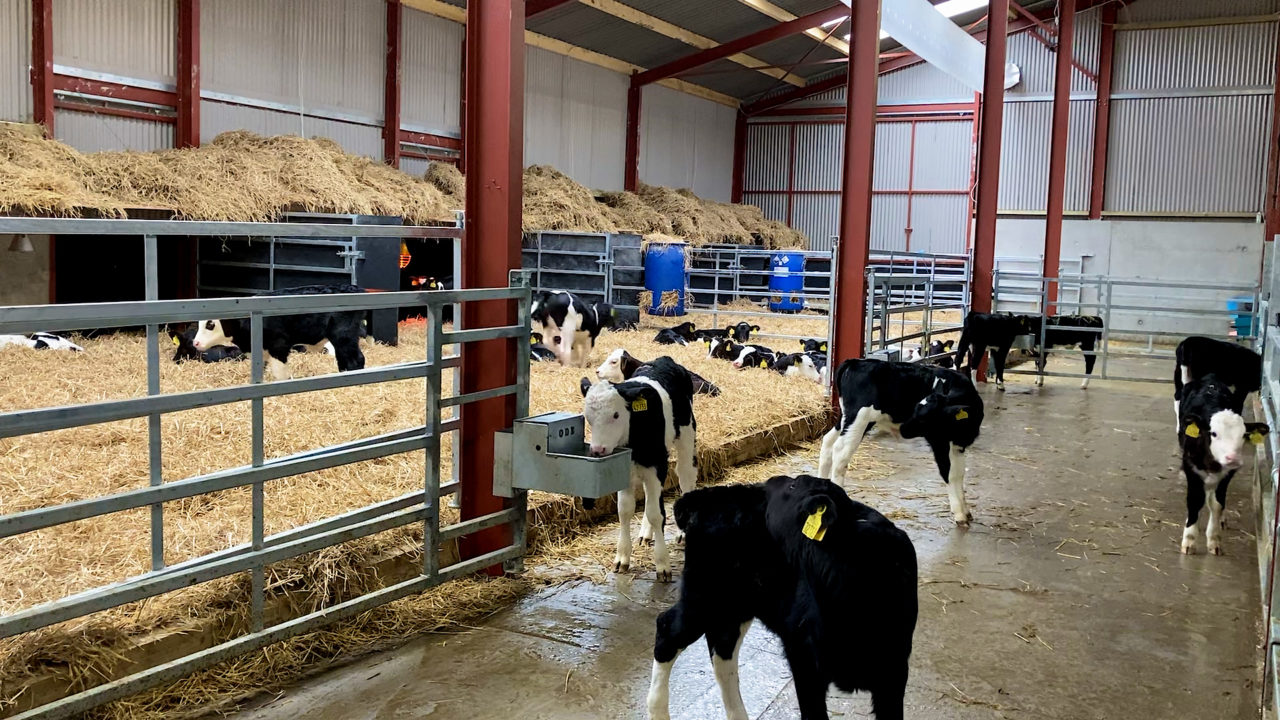Bloat in young calves was one of the topics discussed at this week’s online CalfCare event run by Animal Health Ireland (AHI) in conjunction with Teagasc and Volac.
The event which took place yesterday (Tuesday, January 18) was due to take place on farm, but was moved online as a result of Covid-19 precautions and focused on all things related to calf rearing on farms for 2022.
An issue that was seen on some farms in young calves under three weeks of age in 2021 was bloat. This form of bloat is associated with the abomasum rather than the rumen.
Bloat
Speaking at the event, Liam Gannon from Volac outlined some of the steps that should be taken to reduce bloat in calves.
Liam highlighted that abomasum bloat may be an issue associated with automatic or computerised calf feeders. However, he said that it can be an issue on any farm, even farms feeding whole milk.
Liam stated that bloat is a multifactorial problem: “It is not just one factor, it takes two or three factors to create a bloat issue – which then creates the perfect storm.”
Clostridial bacteria or lactic acid is usually to blame for producing the gas.
Issues including poor hygiene, dirty bedding and inaccurate feeding were highlighted.
Hygiene
The Volac representative highlighted hygiene as an important factor when preventing bloat in calves.
Liam stated: “Your calf rearing equipment needs to be cleaned regularly, not just soaked in cold water.
“Peracetic acid should be used to clean calf feeding equipment. For automatic calf feeders, washes need to take place at least twice a day depending on the numbers.
“A detergent should be used that is effective at the temperature the feeder operates at, not a parlour detergent.”
Liam suggested that farmers using automatic feeders should have two sets of teats which are changed regularly and soaked in peracetic acid.
The webinar also highlighted calf bedding as being an issue. Calves should have access to fresh forage to ensure they don’t eat straw from their bedding.
Osmolaity
Osmolaity was also highlighted by Liam, referring to the solid content of milk / milk replacer and its flow through the abomasum.
Anything that delays the flow of milk through the abomasum allows the bacteria to multiply, increasing the risk of bloat; if clostridial bacteria is present, harmful toxins will be produced.
These toxins can then damage organs within the calf, i.e. the heart, liver and kidneys.
Other factors
Some other factors that can contribute to bloat issues are:
- Not keeping the mixing rate of milk replacer consistent;
- Inconsistent temperatures of milk being fed to calves;
- Inconsistent feeding times;
- Feeding more than 3L of feed/calf.
When using automatic feeders they should be calibrated regularly to ensure the mixing rate is correct.
Calves should also be offered a good quality ration, have access to water and group sizes should also be kept to 12 to 15 calves.
Bloat treatment and prevention
Bloat often causes rapid death so farmers may wonder if there is a treatment to prevent it becoming an issue.
Joris Somers, veterinary advisor with Glanbia said: “Prevention is the best way to deal with bloat. Once a calf has bloat there is very little can be done.
“Unlike a rumen bloat, deflating the calf does not usually help. One treatment is to get the calf to take on water, to pass along the milk that is being digested as quickly as possible.
“This stops the build up of gas in the abomasum. On some farms this may solve the problem, but for many it will be too late.”
Take home messages
Preventing bloat requires a high level of hygiene in the calf shed and from the calf feeding equipment.
Ensure the feeding of calves remains consistent during the rearing period and that automatic calf feeders are calibrated regularly.
Once a calf develops this form of bloat, it is often too late, so prevention is better than cure.
